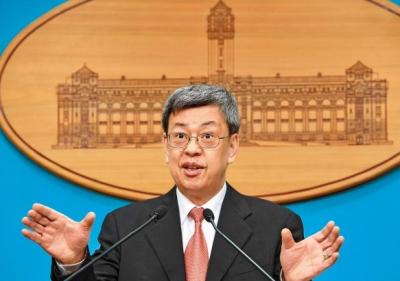Skeletal muscle mass (SMM) — the density of a person’s muscles used to power the movement of their skeleton — is a key factor in determining their life expectancy, according to a study published on Monday by the National Health Research Institutes (NHRI).
Elderly people who have lower SMM measurements might face double the risk of death compared with their peers, the study said.
The study was conducted over a nine-year period, beginning in 1999. It tracked the SMM and body-mass index (BMI) measurements of 1,512 elderly people to determine if there was any correlation between the two figures and the risk of death. Results of the survey showed that elderly people with the highest BMI rating had the least risk of death, while underweight senior citizens faced the highest risk.
The study grouped the test subjects into four categories according to their BMI measurements. Those with a BMI less than 22 were classified as underweight; 22 to 24 as average; and 24 to 27 as overweight, while those with a BMI above 27 were categorized as obese.
The mortality rate for underweight elderly people was 6.72 percent, while the risk of death for the three other BMI categories ranged from 3.76 to 3.5 percent.
The institutes urged the public to stop fixating on BMI as an indicator of good health, adding that ideal SMM should be lower than 11.4kg per cubic meter for men and 8.6kg per cubic meter for women.
Exercising regularly is the best solution to prevent the onset of muscle mass loss, which commences at an annual rate of 1 to 2 percent after the age of 40 and accelerates after 50, the NHRI said.
It also recommended that elderly people eat ample amounts of protein from healthy food sources to help replenish dwindling muscle, adding that vegetables help reduce muscle inflammation.

Taiwan would welcome the return of Honduras as a diplomatic ally if its next president decides to make such a move, Minister of Foreign Affairs Lin Chia-lung (林佳龍) said yesterday. “Of course, we would welcome Honduras if they want to restore diplomatic ties with Taiwan after their elections,” Lin said at a meeting of the legislature’s Foreign Affairs and National Defense Committee, when asked to comment on statements made by two of the three Honduran presidential candidates during the presidential campaign in the Central American country. Taiwan is paying close attention to the region as a whole in the wake of a

Chinese Nationalist Party (KMT) Chairman Eric Chu (朱立倫), spokeswoman Yang Chih-yu (楊智伃) and Legislator Hsieh Lung-chieh (謝龍介) would be summoned by police for questioning for leading an illegal assembly on Thursday evening last week, Minister of the Interior Liu Shyh-fang (劉世芳) said today. The three KMT officials led an assembly outside the Taipei City Prosecutors’ Office, a restricted area where public assembly is not allowed, protesting the questioning of several KMT staff and searches of KMT headquarters and offices in a recall petition forgery case. Chu, Yang and Hsieh are all suspected of contravening the Assembly and Parade Act (集會遊行法) by holding

President William Lai (賴清德) has appointed former vice president Chen Chien-jen (陳建仁) to attend the late Pope Francis’ funeral at the Vatican City on Saturday on his behalf, the Ministry of Foreign Affairs said today. The Holy See announced Francis’ funeral would take place on Saturday at 10am in St Peter’s Square. The ministry expressed condolences over Francis’ passing and said that Chen would represent Taiwan at the funeral and offer condolences in person. Taiwan and the Vatican have a long-standing and close diplomatic relationship, the ministry said. Both sides agreed to have Chen represent Taiwan at the funeral, given his Catholic identity and

PRAISE: Japanese visitor Takashi Kubota said the Taiwanese temple architecture images showcased in the AI Art Gallery were the most impressive displays he saw Taiwan does not have an official pavilion at the World Expo in Osaka, Japan, because of its diplomatic predicament, but the government-backed Tech World pavilion is drawing interest with its unique recreations of works by Taiwanese artists. The pavilion features an artificial intelligence (AI)-based art gallery showcasing works of famous Taiwanese artists from the Japanese colonial period using innovative technologies. Among its main simulated displays are Eastern gouache paintings by Chen Chin (陳進), Lin Yu-shan (林玉山) and Kuo Hsueh-hu (郭雪湖), who were the three young Taiwanese painters selected for the East Asian Painting exhibition in 1927. Gouache is a water-based